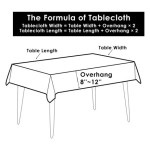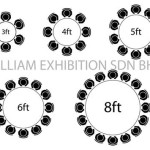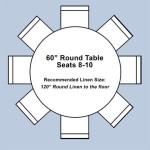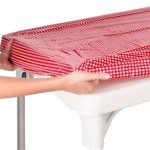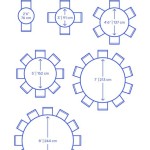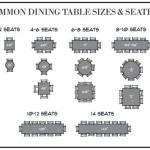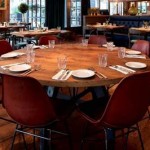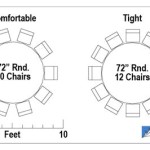Why Use a Table Runner
A table runner, a seemingly simple strip of fabric, offers a surprising multitude of benefits that extend beyond mere decoration. Its versatility and functionality make it a valuable addition to any dining space, capable of enhancing aesthetics, providing protection, and defining ambiance. The strategic placement and thoughtful selection of a table runner can elevate the dining experience, transforming an ordinary table into a focal point.
Numerous factors influence the decision to incorporate a table runner into a table setting. From casual everyday meals to formal gatherings, the right table runner can add a touch of elegance and sophistication. The choice depends on the desired aesthetic, the existing decor, and the specific purpose the runner is intended to serve. This exploration delves into the multifaceted reasons why using a table runner is a worthwhile consideration for any home or event.
Elevating Aesthetic Appeal
One of the primary reasons to use a table runner is to enhance the visual appeal of a table setting. A table runner serves as a decorative element that can complement or contrast with the tablecloth, placemats, and other table linens. It provides an opportunity to introduce color, texture, and pattern, adding depth and visual interest to the overall presentation. A well-chosen table runner can tie together the various elements of the table setting, creating a cohesive and harmonious look.
The selection of a table runner allows for a wide range of stylistic expressions. For instance, a brightly colored runner can inject vibrancy into a neutral-toned dining room, while a runner with intricate patterns can add a touch of sophistication to a minimalist table. Furthermore, the fabric choice plays a significant role in determining the aesthetic impact. Linen runners offer a classic and understated elegance, while silk runners exude a luxurious and opulent feel. Similarly, textured runners, such as those with embroidery or embellishments, can add a tactile dimension to the table setting.
The color palette of a table runner can also significantly impact the mood and ambiance of the dining space. Warm colors, such as reds, oranges, and yellows, can create a cozy and inviting atmosphere, while cool colors, such as blues and greens, can evoke a sense of calm and tranquility. Neutral colors, such as beige, gray, and white, can provide a versatile backdrop that complements a variety of decor styles. The ability to tailor the color scheme to the specific occasion or season is a key advantage of using a table runner.
Beyond color and fabric, the style of the table runner itself contributes to the overall aesthetic. Simple, unadorned runners are ideal for contemporary or minimalist settings, while runners with intricate designs or embellishments are better suited for more formal or traditional gatherings. Consider the existing decor and the desired aesthetic when selecting a table runner to ensure a harmonious and visually appealing result.
The placement of the table runner also influences its aesthetic impact. Traditionally, table runners are placed lengthwise down the center of the table, but alternative arrangements can be equally effective. For example, two runners can be placed crosswise to define individual place settings, creating a unique and visually interesting look. Experimentation with different placements can help to achieve the desired aesthetic effect.
Providing Table Protection
Beyond its decorative function, a table runner serves as a practical protective barrier for the table surface. It helps to prevent scratches, spills, and heat damage from plates, serving dishes, and other items placed on the table. This is particularly important for tables made of delicate materials, such as wood, glass, or marble, which are more susceptible to damage.
The material of the table runner determines its level of protection. Thicker, more durable fabrics, such as cotton, linen, or even coated fabrics, offer superior protection against spills and scratches. These materials can absorb liquids and prevent them from seeping into the table surface. Additionally, some table runners are treated with stain-resistant coatings that further enhance their protective capabilities.
The placement of the table runner also contributes to its protective function. By running the runner down the center of the table, it creates a protective zone that covers the most vulnerable area. This is especially beneficial when serving hot dishes or using sharp utensils, as the runner can help to prevent damage to the table surface. Furthermore, the runner can act as a buffer between the table and heavy objects, reducing the risk of scratches or dents.
Regular cleaning and maintenance of the table runner are essential to ensure its continued protective function. Spills should be cleaned up promptly to prevent staining, and the runner should be washed or dry-cleaned according to the manufacturer's instructions. Proper care will help to prolong the life of the runner and maintain its ability to protect the table surface.
Consider the specific needs of the table and the type of events being hosted when selecting a table runner for protection. For everyday use, a durable and easy-to-clean runner is ideal. For more formal occasions, a more elegant runner can be used, but it's important to ensure that it still provides adequate protection against spills and damage. Using pads underneath the table runner can also enhance protection.
Defining Ambiance and Setting the Mood
A table runner significantly contributes to the overall ambiance and mood of a dining space. It helps to create a sense of occasion, whether it's a casual family dinner or a formal celebratory gathering. The choice of table runner can set the tone for the meal, influencing the atmosphere and enhancing the dining experience.
The color and texture of the table runner play a crucial role in shaping the ambiance. Warm, inviting colors, such as reds and oranges, can create a cozy and intimate atmosphere, perfect for romantic dinners or family gatherings. Cool, calming colors, such as blues and greens, can evoke a sense of relaxation and tranquility, ideal for casual lunches or outdoor meals. Neutral colors, such as beige and gray, provide a versatile backdrop that allows other decorative elements to take center stage.
The fabric of the table runner also influences the mood. Luxurious fabrics, such as silk or velvet, can add a touch of elegance and sophistication, making them suitable for formal occasions. Natural fabrics, such as linen or cotton, create a more relaxed and informal atmosphere, perfect for everyday meals. The choice of fabric should reflect the desired mood and the overall style of the event.
Consider the occasion when selecting a table runner. For festive holidays, themed runners with seasonal colors and motifs can add a touch of cheer and celebration. For romantic dinners, elegant runners with delicate details can create a more intimate and special atmosphere. For casual gatherings, simple and understated runners can provide a relaxed and welcoming vibe.
The placement of the table runner can also affect the ambiance. A lengthwise runner can create a sense of formality and structure, while a crosswise runner can add a touch of creativity and individuality. Experimenting with different placements can help to achieve the desired mood and enhance the overall dining experience. Using complementing centerpieces alongside the table runner further reinforces the desired ambiance.
Lighting can also play a role in enhancing the ambiance created by the table runner. Soft, warm lighting can accentuate the colors and textures of the runner, creating a more inviting and intimate atmosphere. Candles or string lights can be used to add a touch of romance and elegance. The interplay between light and fabric can significantly enhance the overall dining experience.
In summary, the reasons for using a table runner are diverse and compelling. From enhancing aesthetic appeal and providing table protection to defining ambiance and setting the mood, a table runner offers a multitude of benefits that can elevate any dining space. Choosing the right table runner requires careful consideration of factors such as color, fabric, style, and placement. With thoughtful selection and strategic implementation, a table runner can transform an ordinary table into a focal point, enhancing the dining experience and adding a touch of elegance and sophistication to any occasion.

5 Ways To Use A Table Runner Stylemutt Home

How To Use Table Runners At Home House Garden

All About Table Runners How To Use A Runner

5 Ways To Use A Table Runner Stylemutt Home

Table Runners And Placemats

How To Use A Table Runner Innstyle Hospitality S At Whole

When Should You Use A Table Runner Adorn The

Table Runners For Round Tables Find The Right Runner

How To Use Table Runners

Table Runners For Round Tables Find The Right Runner
Related Posts

